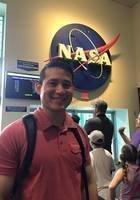Connect with hundreds of tutors like Jose
Who needs tutoring?
FEATURED BY
TUTORS FROM
- YaleUniversity
- PrincetonUniversity
- StanfordUniversity
- CornellUniversity

Jose
About Me
I graduated from San Diego State University in 2012 and earned my BA in International Security & Conflict Resolution with a minor in Islamic & Arabic Studies. I am currently working towards my teaching credential and am also enrolled in a TEFL certification program. Since graduating from San Diego State University, I have primarily been employed as a teacher’s assistant at a local charter school. At the charter school, I help middle school and high school students in a wide variety of subjects. I spend a significant amount of time tutoring students in math courses, including Pre-Algebra, Algebra, and Geometry. In addition, I grade and review assignments which allows me to better identify areas for improvement and tailor my tutoring approach to fit the student’s needs. I have a noted ability to build rapport with students and am genuinely interested in seeing them improve and excel. As a tutor, my teaching style is adaptive yet straightforward. In general, we review the concepts and work through practice problems together. How I explain the concepts and the examples I use varies depending on the student’s interests and learning style. Throughout the process, I ensure the student comprehends the concepts by having them teach it back to me. In my spare time, I like to exercise, keep up with global affairs, read articles about mass transit, and travel. I have visited about 30 countries and credit the experiences with my passion for learning and teaching.
Education & Certifications
Q&A with Jose
Connect with a tutor like Jose
Connect with a tutor like Jose
Tutors with Similar Experience

Joseph
10+ YearsMoravian College and Moravian Theological Seminary
Bachelors, Political Science/Math
View Profile
